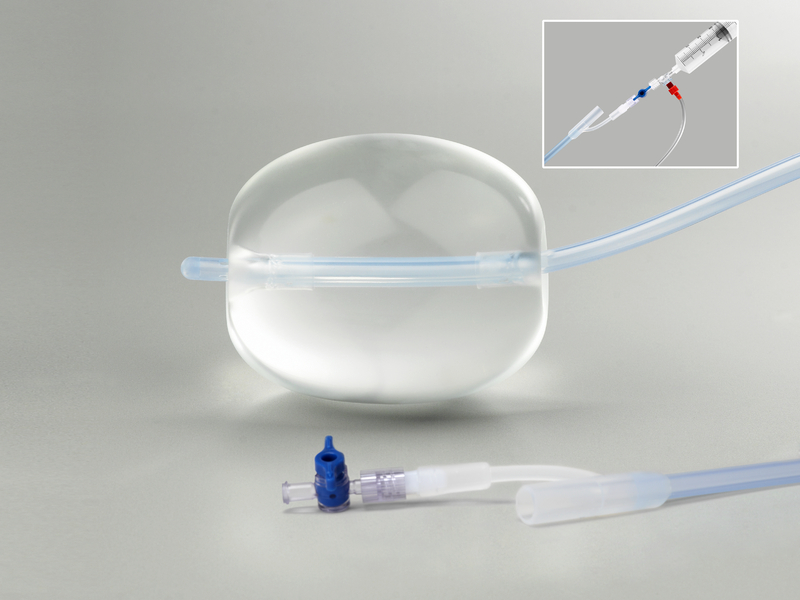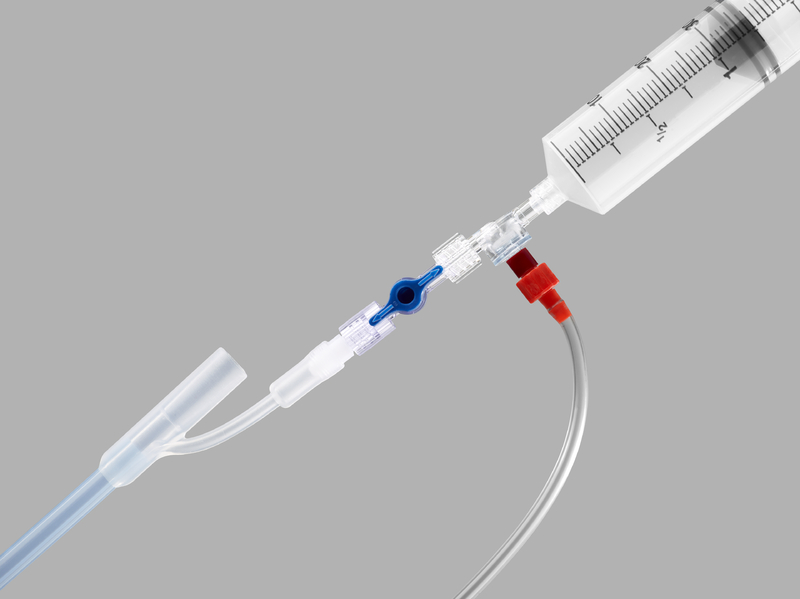BALLOON + CATHETER, POST-PARTUM HAEMORRHAGE, 500 ml
Valid Article
BALLOON CATHETER POST-PARTUM HAEMORRHAGE
Definition
The Intrauterine haemostatic balloon catheter consists of a silicone dual lumen catheter with an inflatable silicone tamponade balloon attached on the distal end. One lumen of the catheter serves as the conduit through which saline is infused into the balloon after insertion into the bleeding uterus. When inflated properly to press against the uterine wall, the balloon provides compression against multiple sites of torn arteries, lacerations and other tissue evoking haemorrhage. The second lumen, which is open at the distal end of the catheter, provides a drainage port for blood and other bodily fluids. At the proximal end of the catheter, a stopcock retains the saline in the balloon until a clinician gradually drains it allowing the uterus to contract.
Specifications
Technical specifications
- Silicone catheter and balloon (latexfree)
- Balloon:
- Volume: 500 ml
- Catheter
- Main channel with open bevelled distal end: allows direct measuring of blood loss
- Separate lumen to inflate the balloon and with a Luer connector at its proximal end which connects to the syringe
- diameter: CH 24
- length: +/- 54 cm
- Rapid instillation component
- Syringe 60 ml
- Sterile, for single use
Packaging & Labelling
Each unit is individually packaged in sterile peel-open pack
Instructions for use
See the enclosed users' guide.
The balloon can be inflated directly with the enclosed syringe or through the rapid instillation component.
Always inflate the balloon with sterile liquid (e.g. normal saline), never with air or any other gas.
Rapid instillation component allows the connection of 3 different parts: balloon, bag with sterile liquid and enclosed syringe. The system is designed so the sterile liquid goes from the drip to the syringe when pulling the plunger, and into the balloon catheter when pushing it.
Precautions for Use
Patient monitoring is an integral part of managing postpartum hemorrhage. Signs of deterioration or non-improvement in the patient's condition should lead to a more aggressive treatment and management of patient uterine bleeding.
Patient urine output should be monitored while the Postpartum Balloon is in use.
MSF requirements
A life saving, easy to use tamponade technique for the management of postpartum haemorrhage that should be present in every maternity










![[KMEDMHAE221] (mod AMP) COMPLEMENTARY RESUSCITATION EQUIPMENT](/web/image/product.template/572665/image_256/%5BKMEDMHAE221%5D%20%28mod%20AMP%29%20COMPLEMENTARY%20RESUSCITATION%20EQUIPMENT?unique=c0e1972)
![[KMEDMHIS25-] (mod ICU) CATHETERS, TUBES and DRAINS 2021](/web/image/product.template/574344/image_256/%5BKMEDMHIS25-%5D%20%28mod%20ICU%29%20CATHETERS%2C%20TUBES%20and%20DRAINS%202021?unique=4976048)
![[KMEDMHEE321A] (mod emergency) COMPLEMENTARY RESUSCITATION EQUIPMENT 2021](/web/image/product.template/574367/image_256/%5BKMEDMHEE321A%5D%20%28mod%20emergency%29%20COMPLEMENTARY%20RESUSCITATION%20EQUIPMENT%202021?unique=9bb058c)
![[KMEDMHHE19B] (mod hospital) GYNAECO/OBSTETRIC MATERIAL VERSION B](/web/image/product.template/572757/image_256/%5BKMEDMHHE19B%5D%20%28mod%20hospital%29%20GYNAECO-OBSTETRIC%20MATERIAL%20VERSION%20B?unique=c689d75)